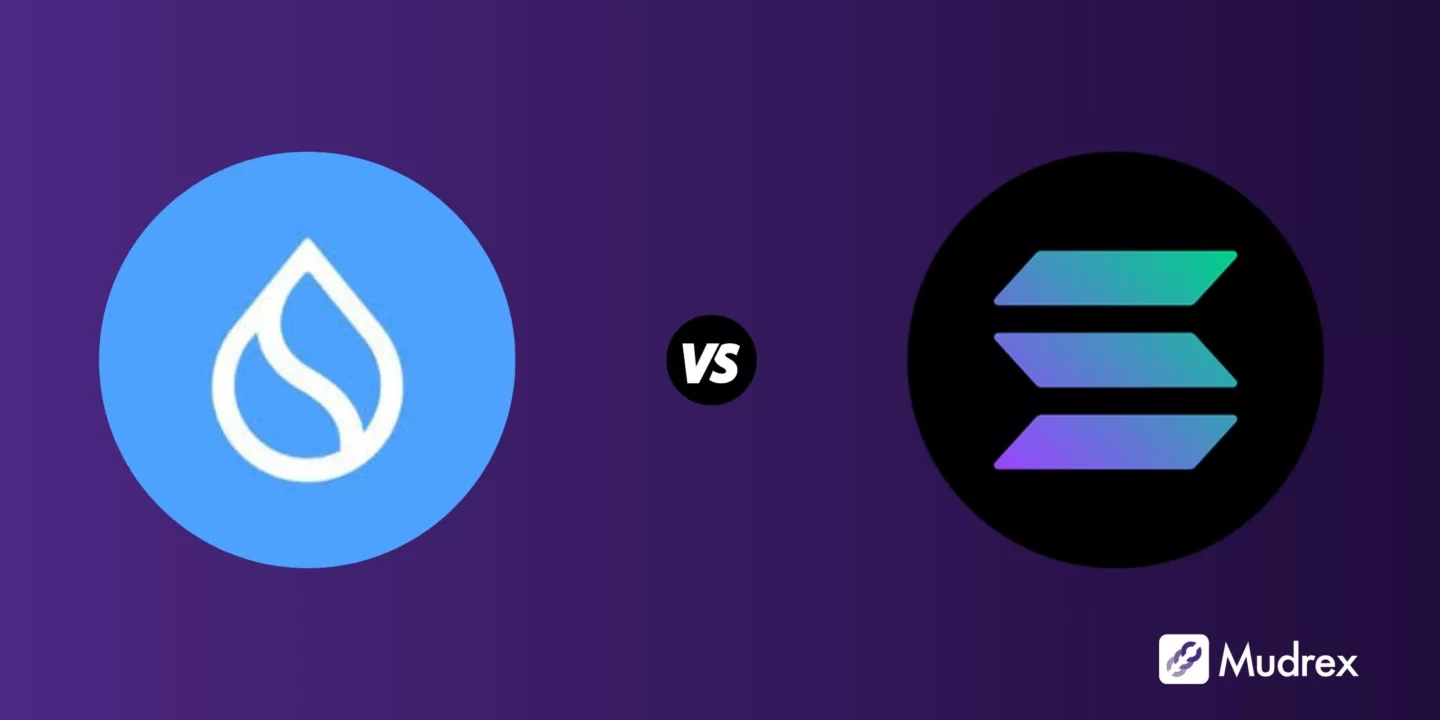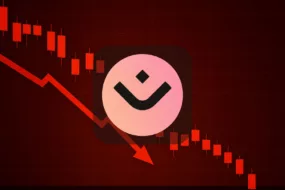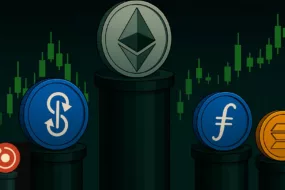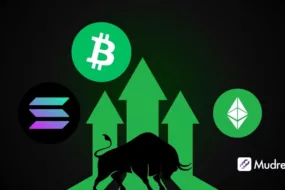
SUI vs Solana: Is SUI the Next Solana Killer?
The race for blockchain supremacy is never-ending, with new platforms emerging to challenge existing giants. Solana, once hailed as an “Ethereum killer”, now faces competition from SUI, a next-generation blockchain promising superior speed, efficiency, and innovation. But is SUI truly capable of dethroning Solana, or will both blockchains find their place in the expanding crypto ecosystem?
To answer this, we’ll analyze what makes a blockchain a true competitor, compare SUI and Solana in terms of performance and adoption, and explore whether SUI has what it takes to replace Solana or if they will coexist in different sectors.
Key Takeaways:
- The requirements for a blockchain killer
- Sui vs Solana Comparison
- Innovative advantages of SUI over Solana
- Overview of market adoption trends for SUI and Solana
- Possible outcome of the rivalry between SUI and Solana
What Makes a Blockchain a “Killer” of Another?
For one blockchain to be considered a “killer” of another, it must offer substantial advantages in key areas while also attracting developers, projects, and institutional backing. Here are the defining characteristics that determine whether one blockchain can replace another:
- Speed and Scalability – Faster transaction processing and network efficiency.
- Lower Fees – More affordable transaction costs for users and developers.
- Ecosystem Growth – Adoption by projects, businesses, and DeFi applications.
- Security and Reliability – Resilience against downtime and network attacks.
- Community and Developer Support – Strong backing from developers and investors.
Ethereum, for example, has remained dominant despite the rise of faster blockchains because of its massive ecosystem. Similarly, Solana has retained a strong position due to its high-speed processing and adoption by developers. But can SUI disrupt this balance? Let’s compare their capabilities.
How Do SUI vs Solana Compare in Terms of Speed, Scalability, and Fees?
SUI and Solana are two high-performance blockchains that prioritize transaction speed, scalability, and affordability. While both networks promise low fees and high throughput, they employ fundamentally different architectures, leading to variations in efficiency, stability, and long-term growth potential.
ALSO READ: Is Solana(SOL) A Good Investment?
1. Speed and Scalability
- Solana boasts an impressive theoretical throughput of 65,000 transactions per second (TPS), made possible by its Proof-of-History (PoH) and Proof-of-Stake (PoS) hybrid consensus model. However, Solana processes transactions sequentially, meaning that during periods of high network congestion, performance may slow down.
- SUI takes a different approach, leveraging parallel transaction execution, which allows independent transactions to be processed simultaneously. This enables SUI to scale beyond 300,000 TPS under optimal conditions, reducing bottlenecks and improving network responsiveness.
- Another key distinction is finality time as Solana typically finalizes transactions within 400 milliseconds, while SUI’s sub-second finality makes it even more efficient in high-frequency trading and DeFi applications.
ALSO READ: Solana Vs Ethereum : Is Solana Better Than Ethereum?
2. Transaction Fees
- Solana’s fees remain among the lowest in the industry, averaging $0.00025 per transaction. However, fee spikes can occur when the network experiences congestion, especially during high-demand NFT mints or DeFi liquidations.
- SUI employs a unique storage-based fee model, where users pay not just for executing transactions but also for storing data on-chain. This model helps stabilize transaction costs over time, making fees predictable and resistant to congestion-based fluctuations.
3. Network Stability and Reliability
- Solana has experienced multiple network outages due to validator overload and congestion issues. These disruptions have raised concerns about Solana’s ability to handle widespread adoption without performance setbacks.
- SUI minimizes validator strain by processing transactions in parallel, significantly reducing the likelihood of system-wide failures, even under peak usage conditions. This architecture enhances network resilience and ensures a smoother user experience.
ALSO READ: The SUI Network Explained
Sui vs Solana: Core Innovations That Give SUI an Edge
While Solana has made a name for itself as a high-speed, low-cost blockchain, SUI introduces several innovations that set it apart.
1. Move Programming Language
Unlike Solana, which uses Rust-based programming, SUI leverages Move, a language initially developed for Facebook’s Diem project. The move allows for:
- More secure smart contracts through a structured ownership model.
- Efficient handling of parallel transactions, reducing congestion.
- Improved developer experience with clearer asset ownership logic.
2. Parallel Transaction Execution
Solana uses sequential transaction execution, which can lead to bottlenecks. SUI, on the other hand, processes non-conflicting transactions in parallel, resulting in higher efficiency and faster block finality.
3. Object-Centric Data Model
SUI shifts from the traditional account-based model to an , allowing direct ownership of assets. This improves:
- Security – Fewer vulnerabilities in smart contract execution.
- Efficiency – Direct user control over assets without intermediary approvals.
4. Enhanced User Experience
SUI focuses on making blockchain interactions more intuitive, catering to gaming, NFTs, and DeFi projects that require high-speed, low-cost transactions.
These innovations position SUI as a serious competitor, especially in applications requiring ultra-fast and scalable blockchain solutions.
Sui vs Solana: Adoption Trends that are Shaping the Competition
Adoption plays a crucial role in determining a blockchain’s long-term success. Let’s analyze how SUI and Solana are gaining traction in the market.
1. Developer and Project Migration
- Solana has a well-established ecosystem with thousands of projects in DeFi, NFTs, and gaming. Major platforms like Magic Eden and Serum have cemented its presence.
- SUI, being newer, is attracting early-stage projects that value its novel technology and better transaction handling. Several former Solana developers have shifted to SUI, drawn by its developer-friendly Move language.
2. Institutional and Venture Capital Interest
- Solana has strong backing from Multicoin Capital, Andreessen Horowitz (a16z), and FTX (before its collapse).
- SUI has raised significant funding from major investors, including Mysten Labs and Jump Crypto, signaling confidence in its potential.
3. Community and Ecosystem Growth
- Solana’s ecosystem remains strong, with a large NFT market, DeFi platforms, and Web3 applications.
- SUI is gaining momentum, with increasing wallet integrations, decentralized applications (dApps), and cross-chain partnerships.
Adoption trends indicate that while Solana still holds a dominant position, SUI is quickly carving out a niche in next-gen blockchain solutions.
ALSO READ: What Is Solana? Is It A Good Investment?
Can SUI Truly Replace Solana, or Will Both Coexist in Different Niches?
While SUI has the potential to challenge Solana, complete replacement is unlikely. Instead, both blockchains could thrive in different areas:
Where Solana Excels:
- Established a DeFi ecosystem with strong liquidity.
- Major NFT projects built on Solana.
- Proven developer network supporting diverse applications.
Where SUI Might Outperform:
- Gaming and metaverse applications that need ultra-fast and low-cost transactions.
- Institutional adoption, as its security-focused architecture, may appeal to enterprises.
- Cross-chain functionality, enabling better interoperability with multiple blockchains.
Rather than one replacing the other, SUI and Solana may complement each other, addressing different use cases and market segments.
Conclusion
SUI presents an exciting technological leap with parallel execution, Move-based smart contracts, and an innovative object-based model. It offers superior transaction handling, improved security, and lower fees, making it a strong contender in the high-performance blockchain space.
However, Solana is far from obsolete. It remains a leading blockchain for DeFi, NFTs, and dApp development, with an extensive ecosystem and significant institutional backing.
Instead of being a “Solana killer,” SUI is more likely to coexist with Solana, excelling in areas where its architecture offers distinct advantages. The future will depend on developer adoption, network stability, and real-world use cases, but the competition will surely drive further innovation in the blockchain industry.





